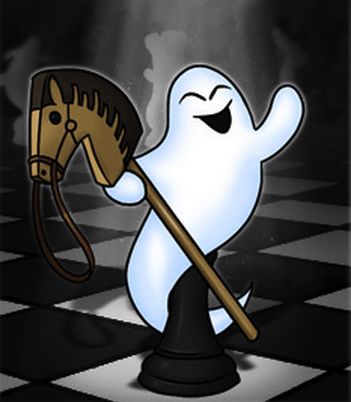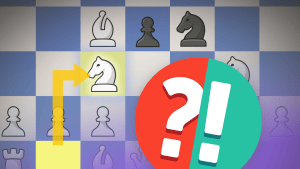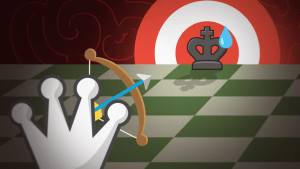
How to Spot the "Invisible" Pin
Pins are very popular and powerful chess weapons, and I am sure you've used them in dozens of your own games.
If you just started playing chess and never heard about pins, I strongly recommend you check the Tactics Trainer.
But even if you are a true expert of chess pins, you still might wonder, what in the world is the "invisible" pin?
Well, in order to explain this very tricky kind of a pin, let me start with a traditional pin.
Look at the position in the diagram above. It is difficult to miss two powerful pins: along the d-file and the h4-d8 diagonal.
Apparently GM Kostic's opponent suffered from a sort of chess blindness that day. Otherwise it is difficult to explain why he didn't play 12... Qe7 with a worse but playable position.
So, this example shows a classical pin, which is easy for everyone to see.
Now compare this game to the following one, which I played in the National Junior Championship when I was 13 years old.
Did you see any pins in the position on the last diagram? Neither did I! And yet, after the powerful move 14. e5! followed by a quiet move 15.Nb3! the pin along the d-file cost me some material and eventually the game!

Of course, the idea is not new. Let's look at an iconic game by Capablanca:
This game was analyzed thousands of times in thousands of books and magazines not just because it is a fine example of Capablanca's positional skills, but also because it is the game that basically started the deep concept of the Benko Gambit.

José Raúl Capablanca by Aris Gionis
And it was Alekhine first who showed that Capablanca's brilliant positional idea had a tactical flaw: instead of winning a pawn, White should have quickly finished his development and start an attack.
As you can see, the idea is the same as in my game: White sacrifices the e4 pawn and moves away the Nd4 to clear the d-file, and Black is in trouble.
Despite the simplicity of the idea, many strong chess players miss it. The only explanation is the pin is "invisible" in the beginning, and it requires a pawn sac for the pin become obvious.
In the next game, a GM and an IM both missed the invisible pin. Can you spot it?
In the real game after 11.Qd2?? Qb8 the opponents agreed to a draw. I guess both of them noticed the missed opportunity and decided to call it quits before they committed even bigger blunders!
As you could see, the "invisible" pin is more difficult to notice, compared to the regular pin, but the potential benefits are huge, so keep your eyes open!
RELATED STUDY MATERIAL
- Check out GM Serper's last article: The Cab Driver Who Knew How to Play Chess.
- Watch IM Daniel Rensch's video: 5 Pins You Must Know!
- Play a match between Nimzowitsch and Capablanca in the Chess Mentor.
- Practice your pins in the Tactics Trainer.
- Looking for articles with deeper analysis? Try our magazine: The Master's Bulletin.

